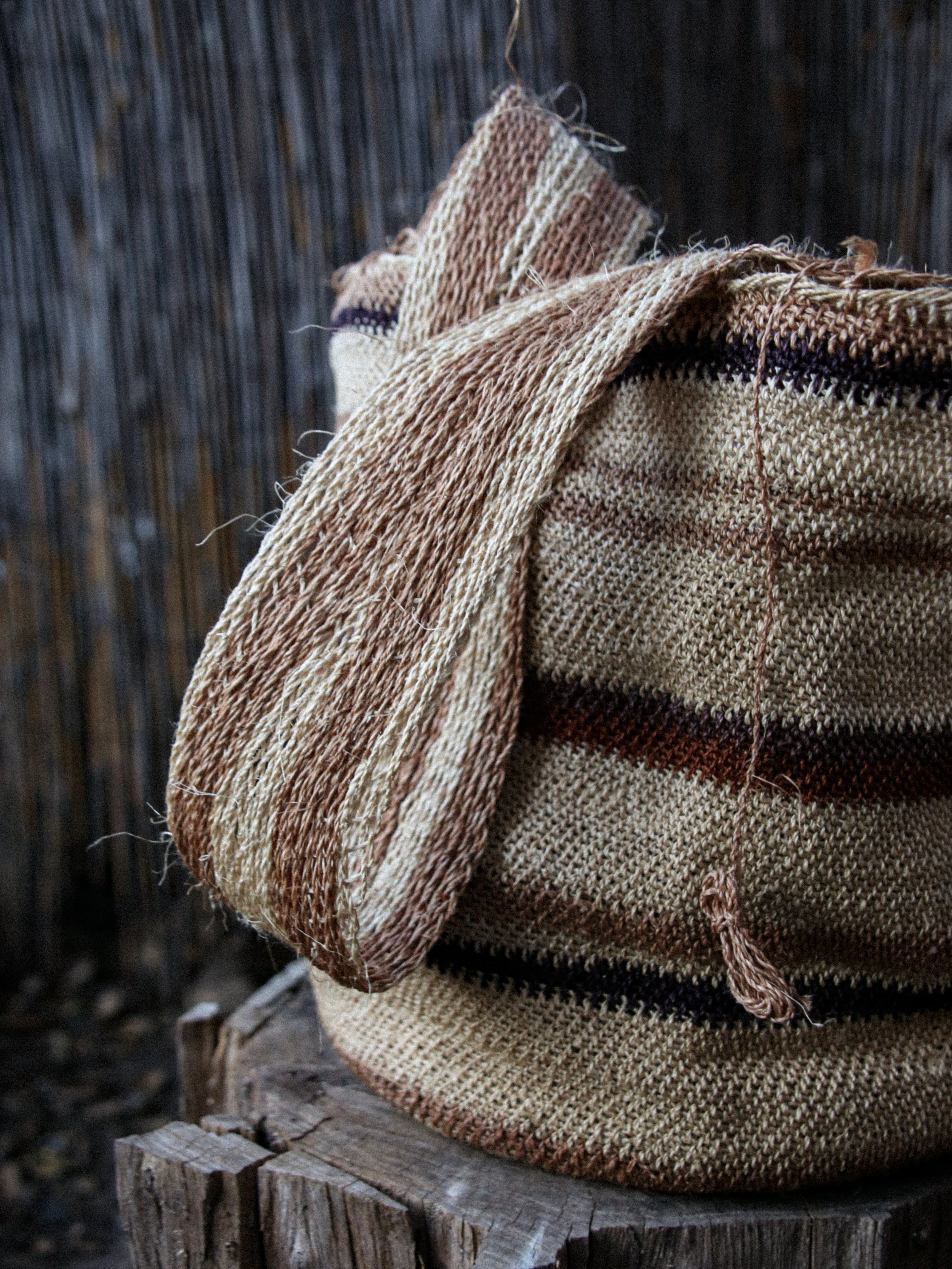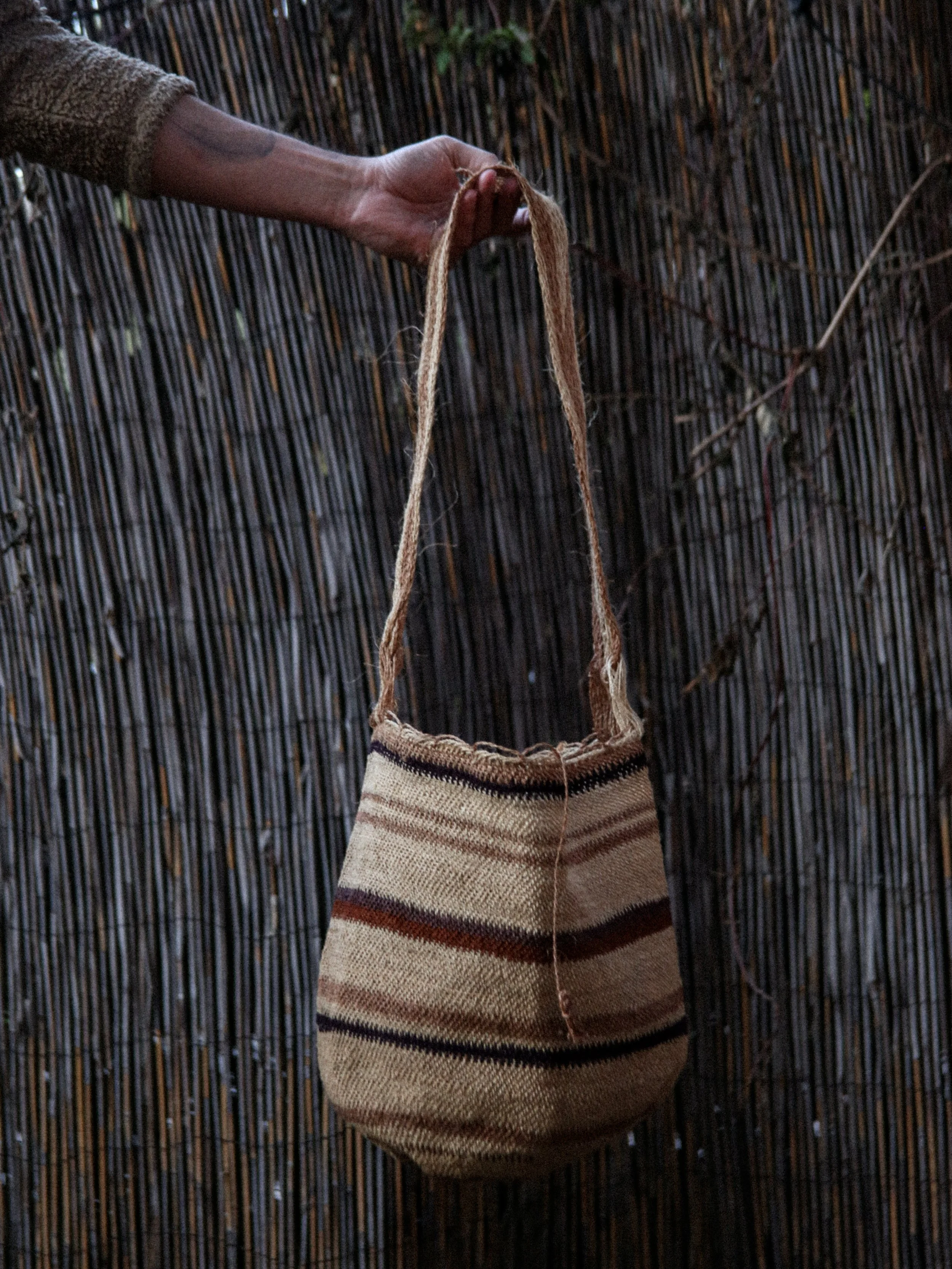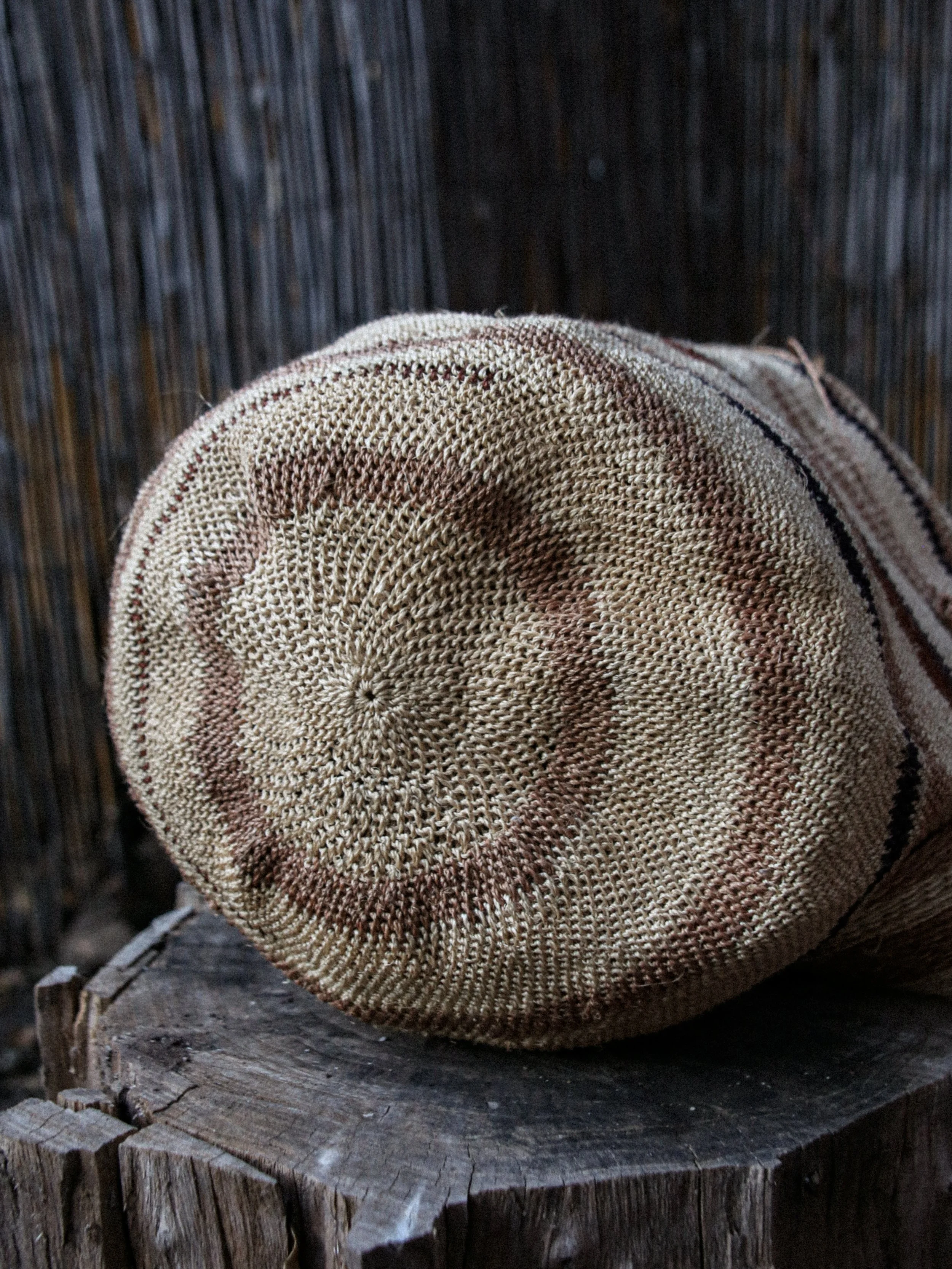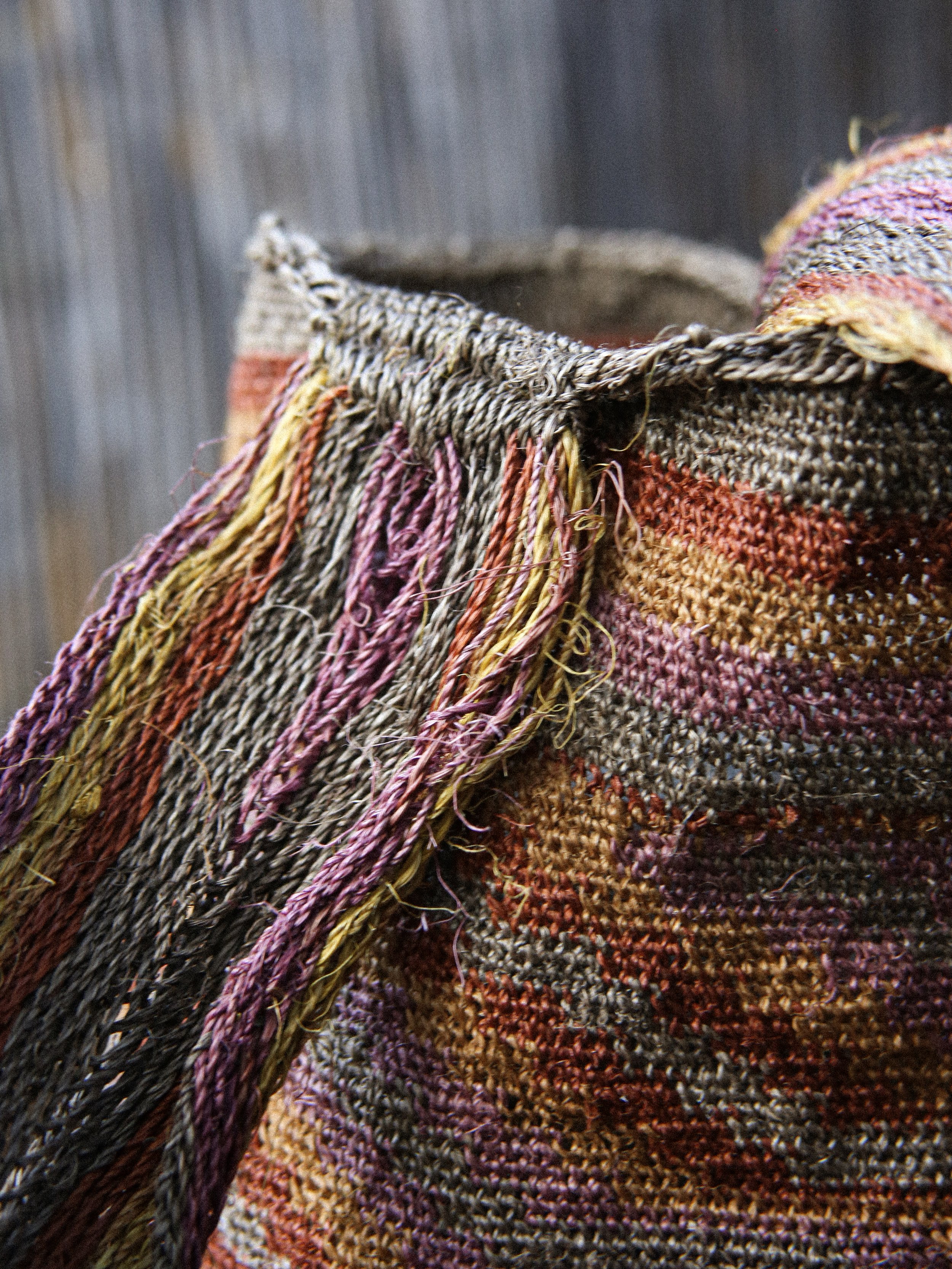Wiwa Mochila No.1
This satchel bag is handmade by the women of the Wiwa tribe in the Sierra Nevada of Santa Marta, Colombia. The weaving techniques used to make these bags have been passed down from generation to generation, giving each piece a special touch. This was made from ficus fibers and has a looser weave creating a lightweight bag.
Dimensions:
Body: 10.5” long x 11” wide (laying flat)
Strap: 18” long x 3.5” wide
Care Instructions:
We recommend hand washing in cold water. If a full wash is needed, turn bag inside out and place in a cotton mesh garment bag. Use a low / delicate setting with cold water.
This satchel bag is handmade by the women of the Wiwa tribe in the Sierra Nevada of Santa Marta, Colombia. The weaving techniques used to make these bags have been passed down from generation to generation, giving each piece a special touch. This was made from ficus fibers and has a looser weave creating a lightweight bag.
Dimensions:
Body: 10.5” long x 11” wide (laying flat)
Strap: 18” long x 3.5” wide
Care Instructions:
We recommend hand washing in cold water. If a full wash is needed, turn bag inside out and place in a cotton mesh garment bag. Use a low / delicate setting with cold water.
This satchel bag is handmade by the women of the Wiwa tribe in the Sierra Nevada of Santa Marta, Colombia. The weaving techniques used to make these bags have been passed down from generation to generation, giving each piece a special touch. This was made from ficus fibers and has a looser weave creating a lightweight bag.
Dimensions:
Body: 10.5” long x 11” wide (laying flat)
Strap: 18” long x 3.5” wide
Care Instructions:
We recommend hand washing in cold water. If a full wash is needed, turn bag inside out and place in a cotton mesh garment bag. Use a low / delicate setting with cold water.
A Message from Bryan:
I left Colombia over 22 years ago and for the longest time I wished I had a an authentic Mochila from the Arhuaco and Kogi tribes. As that wish was gestating in my spirit and imagination, in time it became a reality. I acquired my first Mochila in 2011 and I have been collecting them ever since. I like re-homing and sharing these simple and beautiful pieces of ancestral tradition.
Sometimes I think about the women who weave them, native women passing down these ancestral techniques to their daughters and granddaughters, I imagine what the Sierra Nevada smells like - I think about the sounds of the wild life, the rainfall, the sacred high lakes and the dark starry nights. My mochila is a portal to what is called by many the heart of the world.






















